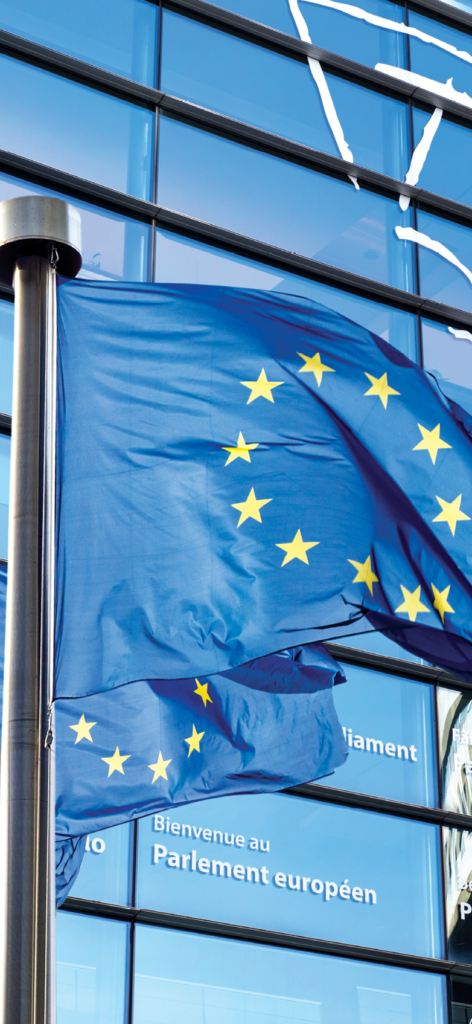 For the first time, European Commission Directive 2006/46/EC required all listed companies to produce a corporate governance statement in their annual report to shareholders. Europe 2020 and the EU Action Plan (2012) are examples of the European Commission’s published long-term plans for developing corporate governance practices, increasing competitiveness, and developing sustainability among European companies. These and other EU corporate governance reforms have succeeded in bringing about substantial convergence in corporate governance regimes among member states. Yet the EU still faces significant challenges in ensuring that corporate governance initiatives, such as gender diversity and say-on-pay, are well accepted.
For the first time, European Commission Directive 2006/46/EC required all listed companies to produce a corporate governance statement in their annual report to shareholders. Europe 2020 and the EU Action Plan (2012) are examples of the European Commission’s published long-term plans for developing corporate governance practices, increasing competitiveness, and developing sustainability among European companies. These and other EU corporate governance reforms have succeeded in bringing about substantial convergence in corporate governance regimes among member states. Yet the EU still faces significant challenges in ensuring that corporate governance initiatives, such as gender diversity and say-on-pay, are well accepted.
The Company
Within Europe’s public, private, and not-for-profit sectors there exists a wide variety of legal forms of organisation. Each sector faces different governance challenges and specific codes have been developed to identify best-practice principles for each of the sectors. Adopting corporate governance best practices improves competitiveness and can lead to improved access to external financing, a lower cost of capital, improved operational performance, increased company valuation and improved share performance, improved company reputation, and reduced risk of corporate crises and scandals.
The Owners
Significant differences exist in investor ownership patterns and engagement practices among shareholders in Europe in the areas of share concentration, share ownership patterns, control-enhancing mechanisms (situations where shareholders increase their control over a company without increasing their proportional stake in shareholding), and the levels of shareholder activity. Two broad positive implications of concentrated ownership in Europe are that 1) controlling shareholders may be more willing to adopt a longer-term outlook than other investors are, since they can insulate the management from the effects of share price fluctuations and economic cycles; and 2) management can be directly monitored by the owner of the company. This monitoring creates less scope for CEOs to pursue their own private agendas regarding excessive executive remuneration, and it helps avert risky takeovers. Research indicates that controlling shareholders may be more engaged in overseeing the operations of a company than institutional investors are.
However, there also are challenges associated with concentrated ownership in Europe: 1) controlling shareholders may reduce the willingness of institutional investors, foreign investors, and other minority shareholders to invest or engage with companies; 2) minority shareholders may feel vulnerable when investing alongside a controlling shareholder, even when investor protection exists; 3) the board may have little effective power compared to the controlling shareholders; and 4) there may be less emphasis on corporate transparency and disclosure, since the controlling shareholder may be provided with ready access to all company information.
The Board
There are a wide variety of board structures, composition, and practices among European companies. Nordic boards, for example, are typically unitary and two-tiered. In recent years, board diversity has become an important corporate governance issue, and many European countries have introduced gender quotas in particular. Directors’ duties in many countries have been clarified, and there is an increased scrutiny concerning related-party transactions. Board evaluations are becoming increasingly common.
The Management, Stakeholders, Corporate Responsibility, and Ethics
Among European companies there are significant differences in executive powers delegated to management. The role of stakeholders (employees, financiers, suppliers, local communities, and government) varies considerably across companies, sectors, and countries. In some European countries, the rights of stakeholders are enshrined in company law or other related legislation, such as codetermination and employment-protection legislation. By contrast, companies in other countries have a tradition of focusing more narrowly on the interests of shareholders. Corporate responsibility is becoming more important among European companies, and many companies are developing policies concerning the ethical behaviour of their employees.
The European Context
The word “Europe” may be used to describe several different entities. For example, it can refer to the 47 member countries of the Council of Europe. On other occasions it may be used to refer to the 18 Eurozone countries that share the euro currency.
More frequently, the word is used as a collective term to describe the 28 member states of the European Union. The population of the European Union is about 490 million people, and the land area is nearly 4.5 million square kilometres. Over time, this member-ship is likely to grow, with the addition of EU candidate countries and potential candidate countries. Germany has the largest population, with 80 million people, and Malta has the smallest, with about 400,000 people.
Why Is Europe Distinctive?
Although the EU comprises 28 member states that are all extremely proud of their distinctive national identities, the EU has created a region where business cooperation between member states is becoming increasingly common.
Europe has become one of the fastest changing corporate governance environments in the world. These governance changes have been caused by many international factors, including the European Commission’s focus on corporate governance.
As an independent supranational authority separate from the member states’ governments, the European Commission has been described as “the only body paid to think European.” Article 17 of the Treaty on European Union identifies the responsibilities of the Commission to include the following:
- Developing strategies;
- Drafting legislation and arbitrating in the legislative process;
- Representing the EU in trade negotiations;
- Making rules and regulations;
- Drawing up the budget of the European Union; and
- Scrutinising the implementation of the treaties and legislation.
Originally, the driving forces of the European Commission were 1) to cement the single market by creating common standards in governance as in other areas; and 2) to bolster market and public confidence in the wake of the dotcom and other scandals. The European authorities have always seen corporate governance as an important plank of their regulatory programme. Thus many commentators suggest that the European Commission does not see corporate governance as value creating, whereas investors and enlightened corporate managements do.
The roadmap for corporate governance in the European Union has been clearly defined in two action plans, published by the European Commission in 2003 and 2012, along with five other proposals and directives. They are listed here in chronological order:
EU Action Plan (2003) – This plan (European Commission 2003a) was based on a report by the High Level Group of company law experts chaired by Jaap Winter (Winter Report 2002). The plan established four main pillars for corporate governance reforms:
- Modernizing the board of directors – The commission’s recommendations (all adopted in 2005) concerned the following:
- Executive versus non-executive directors – Boards should comprise a balance of executive and non-executive directors so that no individual or group of individuals can dominate decision making. On a unitary board, the chair and CEO roles should be separate; and the CEO should not immediately become chair of either a unitary or a supervisory board.
- Independent directors – A sufficient number of independent directors should be elected to the board of companies to ensure that any material conflict of interest involving directors will be properly dealt with. A director should be considered to be independent only if he or she is free of any business, family, or other relationship – with the company, its controlling shareholder, or the management – that creates a conflict of interest such as to impair his or her judgment.
- Directors’ remuneration – European listed companies should disclose their remuneration policy and remuneration details of individual directors in their annual report.
- Collective responsibility – There should be collective responsibility of all board members for both financial and nonfinancial reporting.
- Enhancing corporate governance disclosure – The commission required all listed companies in the EU to include in their annual report a comprehensive corporate governance statement covering the key elements of their governance structures and practices. This statement should be based on a “comply or explain” principle (that is, it should refer to the national code of corporate governance and specify which parts of the code the company complies with and explain any deviations). The commission adopted this recommendation in 2006.
- Strengthening shareholders’ rights – The commission requires that shareholders should have similar rights throughout the EU. In particular, procedural rights involving asking questions, tabling resolutions, voting in absentia, and participating in general meetings were identified as important rights. The commission also identified problems relating to cross-border voting as needing to be addressed as a matter of urgency. The commission adopted these recommendations in 2007 in the Shareholder Rights Directive.
- Coordinating corporate governance initiatives in member states – these recommendations focused on the development of national corporate governance codes and the monitoring and enforcement of compliance and disclosure.
Europe 2020 was launched in 2010 and is the European Union’s 10-year growth and jobs strategy. It sets five headline targets for the EU to achieve by the end of 2020. These cover the following areas:
- Employment
- Research and development
- Climate/energy
- Education
- Poverty reduction and social inclusion
- The objectives of the strategy are supported by seven flagship initiatives:
- Innovation
- The digital economy
- Employment
- Youth
- Industrial policy
- Poverty
- Resource efficiency
EU Action Plan (2012) was adopted in 2012 to increase long-term growth-orientated investment that will lead to more competitive and sustainable companies in the long term. The plan envisages new provisions for reporting on board diversity, risk management, and executive remuneration as well as for improving the quality of corporate governance reports, especially explanations made under the comply-or-explain framework. The following are some of the plan’s key measures to enhance transparency:
- Board structure – The commission acknowledged the coexistence of different board models deeply rooted in national legal systems, stating that it would not pursue board-structure harmonisation.
- Shareholder identification and engagement – The commission recommended better mechanisms for companies to identify shareholders and to enhance shareholder engagement. The plan strengthens transparency rules for institutional investors, including disclosure of institutional investors’ voting, and better shareholder control over related-party transactions. The commission intends to investigate whether employee share ownership should be encouraged.
- Disclosure – The commission recommended that corporate governance reporting be improved, especially concerning explanations for not applying code provisions. This particularly includes the disclosure of board diversity policy, risk-management policies, remuneration policies and individual remuneration of directors, and shareholder voting on the remuneration policy and the remuneration report.
Proposal for the revision of the Shareholder Rights Directive (April 2014) – The published revisions (European Commission 2014) will tackle certain corporate governance shortcomings, focusing on the behaviour of companies and their boards, shareholders (institutional investors and asset managers), and intermediaries and proxy advisors (firms providing services to shareholders, notably voting advice). According to the European Commission, shareholders too often have supported managers’ excessive short-term risk taking and have not monitored closely the companies they invested in.
An objective of the proposal is to make it easier for shareholders to use their existing rights over companies and to enhance those rights where necessary. This would help ensure that shareholders become more engaged, do a better job of holding the management of the company to account, and act in the long-term interests of the company. According to the commission, a longer-term perspective creates better operating conditions for listed companies and improves their competitiveness.
Key elements of the proposal include stronger transparency requirements for institutional investors and asset managers on their investment and engagement policies regarding the companies they invest in, plus a framework to make it easier to identify shareholders so they can more easily exercise their rights (such as voting rights), in particular in cross-border situations. It would also require proxy advisors to be more transparent on the methodologies they use to prepare their voting recommendations and on how they manage conflicts of interests.
The proposal introduces a European say-on-pay for the first time. The proposal will require companies to disclose clear, comparable, and comprehensive information on their remuneration policies and how they were put into practice. There will be no binding cap on remuneration at the EU level, but each company would have to put its remuneration policy to a binding shareholder vote. The policy would need to 1) include a maximum level for executive pay; 2) explain how it contributes to the long-term interests and sustainability of the company; and 3) explain how the pay and employment conditions of employees of the company were taken into account when setting the policy, including explaining the ratio of executive pay to the pay of average employees.
In October 2014, the European Confederation of Directors’ Associations (ecoDa) published a reaction to the proposal (ecoDa 2014), arguing that European institutions should not jeopardize corporate governance structures in companies. The ecoDa paper states that it is essential to keep boards of directors as the central actors and not to disturb the delicate equilibrium between the roles and duties of a shareholders’ meeting versus a board of directors in a perhaps unsuccessful effort to cure the intrinsic problem of accountability of the board toward shareholders. It suggests that it is important for boards to retain the leadership in defining the level and the structure of management remuneration, while the remuneration of directors has to be decided by the shareholders. The ecoDa paper argues that it is not realistic to turn inactive shareholders into micromanagers, and that it is doubtful whether the directive will lead to more engagement and long-term thinking from institutional investors.
Recommendation on corporate governance reporting (April 2014) aims at improving corporate governance reporting by listed companies.
Proposal for a directive on single-member private limited liability companies (April 2014) aims to facilitate the creation of companies with a single shareholder across the EU. It should make it easier for businesses to establish subsidiaries in other member states, as most subsidiaries tend to have only one share- holder—a parent company.
Directive on Disclosure of Non-Financial and Diversity Information (April 2014), adopted by the European Parliament, concerns disclosure of nonfinancial and diversity information by certain large companies and groups. It requires companies to disclose information on policies, risks, and outcomes regarding environmental matters, social and employee-related aspects, respect for human rights, anti-corruption and bribery issues, and diversity in their board of directors.
The rules will only apply to some large companies with more than 500 employees. In particular, large public- interest entities with more than 500 employees will be required to disclose certain nonfinancial information in their management report. This includes listed companies as well as some unlisted companies, such as banks, insurance companies, and others that are so designated by member states because of their activities, size, or number of employees. The scope includes approximately 6,000 large companies and groups across the EU.
The directive leaves significant flexibility for companies to disclose relevant information in the way they consider most useful or in a separate report. Companies may use international, European, or national guidelines that they consider appropriate (for example, the UN Global Compact, ISO 26000, or the German Sustainability Code).
Many corporate governance commentators believe that the EU corporate governance initiatives have succeeded in bringing about substantial convergence, harmonisation, and unification in corporate governance regimes among its member states (Ivaschenko and Brooks, 2008). However, some commentators doubt whether this is true. They argue that Swedes still have multiple voting rights, the Spaniards still worry about the inability of shareholders to respond to explanations, the Germans still have two-tier boards, and the United Kingdom allows votes on related-party transactions, which the rest of the EU does not.
The problem for the European Commission has been to design a single system against a background of widely differing legal traditions and ownership structures. Undoubtedly the European Union has come some way toward convergence because of the wide acceptance of comply or explain, but it can be argued that there is little agreement in many of the detailed corporate governance practices and norms, and in particular the gulf remains wide between markets with dispersed ownership and those markets with controlling shareholders.

Legislation, “Soft Law,” and Comply-or-Explain
The corporate governance framework for listed companies in the European Union is a combination of legislation and “soft law” (corporate governance codes
European countries and some international bodies support corporate governance in diverse ways. The following points describe the focus on corporate governance of different entities:
- EU member states – Parliaments in all of the 28 member states have introduced or revised their national corporate governance codes in the last ten years. In 2009, a report by the European Commission identified divergences of practices in the context of national governance codes and in particular how they were monitored and enforced (European Commission 2009).
- EU candidate and potential candidate countries – Many of the EU candidate and potential candidate countries have been introducing corporate governance laws and regulations to satisfy EU member- ship conditions.
- International bodies – International bodies, such as IFC (International Finance Corporation), International Corporate Governance Network (ICGN), and the Organisation for Economic Co-operation and Development (OECD), have been developing international standards that affect European corporate governance practices.
At a national level, changes in corporate governance codes either have been initiated by the public sector or private sector or have been a mixed initiative. A 2014 survey found that 89% of directors at European listed companies believed that compliance with national corporate governance codes was important and a further 9% felt that it was somewhat important (Heidrick & Struggles, 2014). Different European countries have different levels of compliance, and the newer EU members tend to have the lowest levels of compliance. A survey in Bulgaria, for example found that 79% of Bulgarian listed companies complied or explained, 12% complied, and 9% did neither comply nor explain (Boeva and Pavlova, 2012).
What Are the Challenges?
Four key corporate governance challenges for Europe have emerged:
- Finding the right blend of regulation and soft law – The commission needs to decide on the mix of formal regulation and comply-or-explain provisions that will deliver the most effective outcomes for companies in their ability to generate wealth and employment over the long term.
- Boilerplating – Many European listed companies’ annual reports provide information that does not differ from other companies’ annual reports and is identical from year to year.
- Weak explanations – Weak explanations occur when companies deviate from the national code of corporate governance, and the explanation for the deviation under the comply-or-explain regime is often lacking in detail. Several jurisdictions (for example, Belgium, The Netherlands, and the United Kingdom) have published guidelines on the appropriate character of an explanation. An explanation is sufficient if it allows general-public readers to understand which way the company is dealing with a particular issue and why it is doing so. Regarding these weak explanations, the European Commission has concluded that “the information provided is in general unsatisfactory and the oversight by monitoring bodies is insufficient” (European Commission 2012).
- Finding the right blend of national and regional regulation – Some national governments wish to retain law-making authority, and there is therefore some tension between the centralized law making generated by the European Parliament and the commission.
Summary
Some commentators have suggested that the EU has a fragmented approach – with several dispersed topical recommendations and directives – that is quite different from the more principle-led approach of the OECD. However, there is general agreement that EU directives have created a solid framework for improving corporate governance in its member states and have triggered many corporate governance improvements. European Commission Directive 2006/46/EC required all listed companies to produce a corporate governance statement in its annual report to shareholders for the first time. This and other EU corporate governance reforms have succeeded in bringing about substantial convergence in corporate governance regimes among its member states.
Yet significant challenges still face the EU in ensuring that the hard and soft laws are well absorbed and become a norm rather than an imposed requirement. The commission’s Europe 2020 and EU Action Plan (2012) are examples of long-term plans for developing corporate governance practices, increasing competitiveness, and developing sustainability among European companies. i
About the Authors
Ralitza Germanova (associate operations officer, IFC Corporate Governance Group); Chris Pierce (CEO, Global Governance Services Ltd, London); Beatrice Richez-Baum (secretary general, ecoDa); and Philip Armstrong (senior advisor, IFC Corporate Governance Group).































